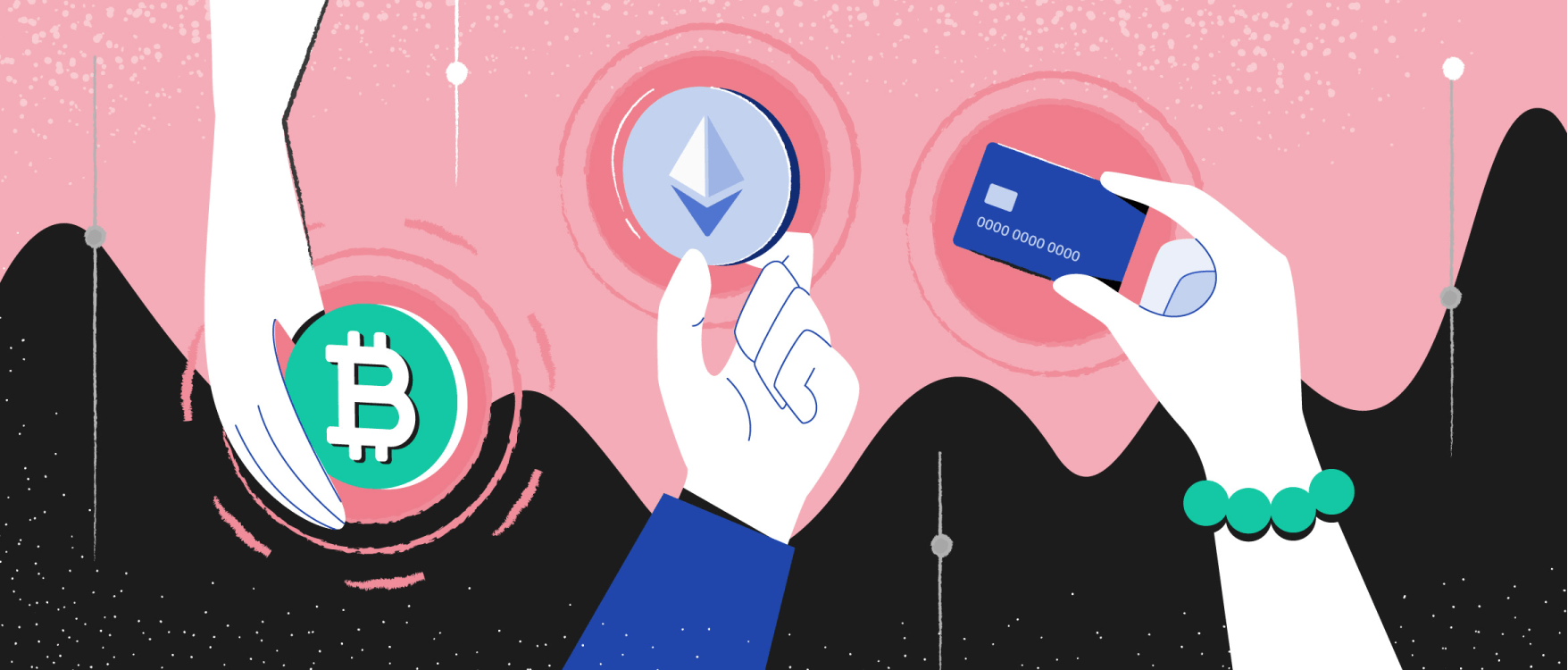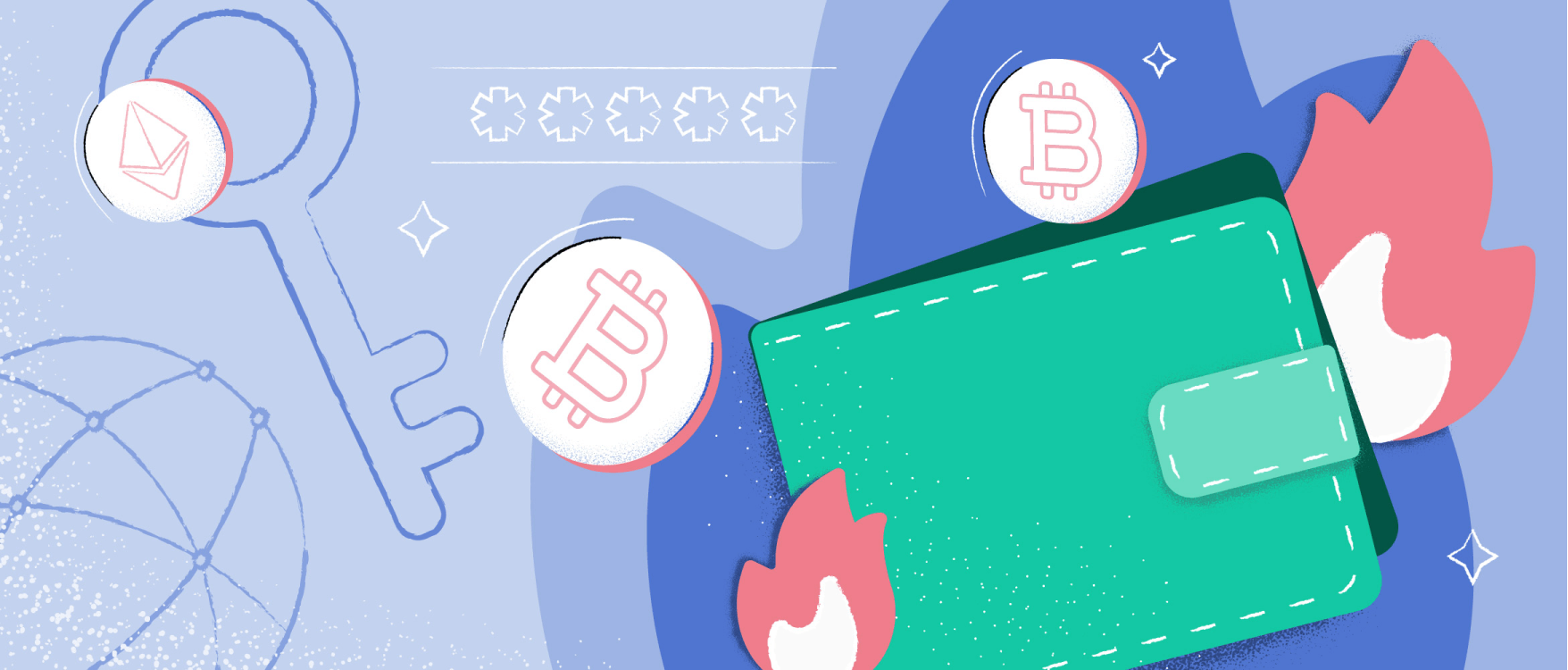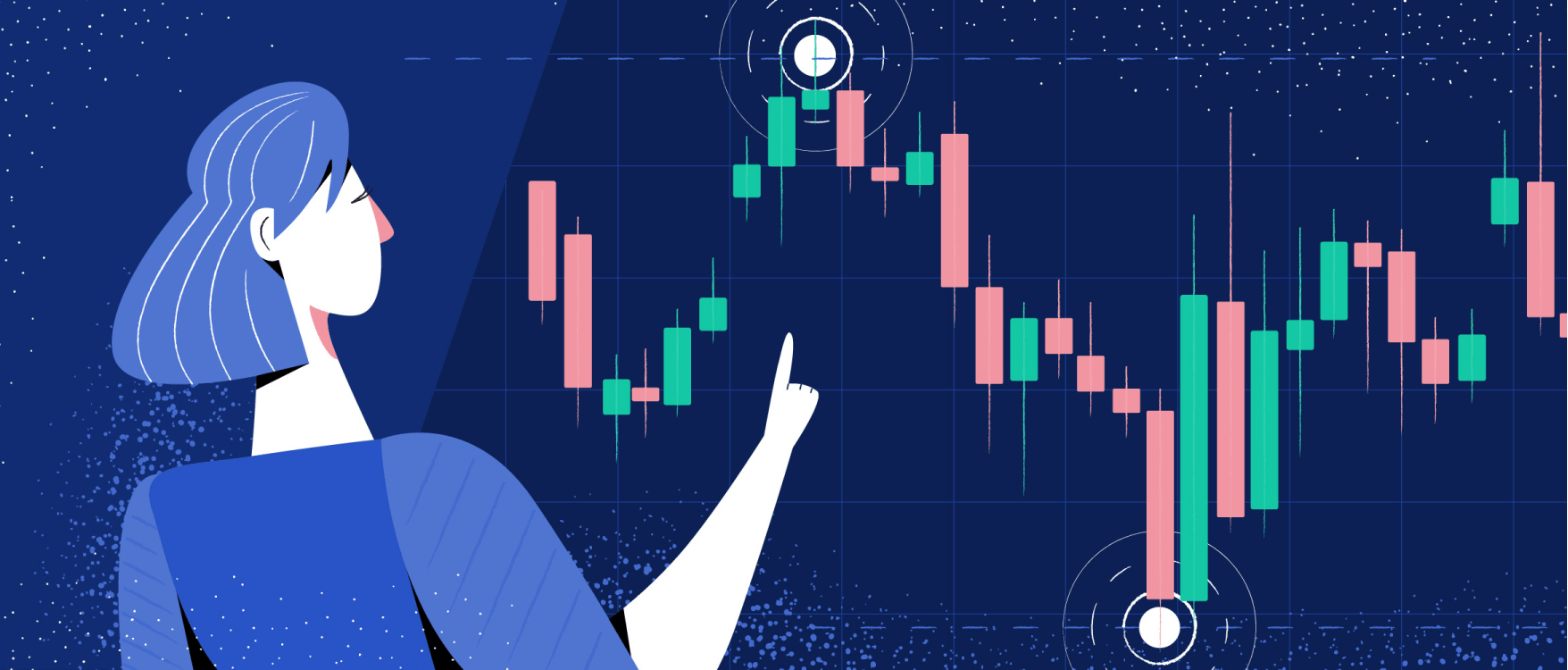
- All
- Tools
- Analytics
- Technical Analysis
- Trading
- Blockchain
- DeFi
- Guides
- Company News
- Educational
- Opinion
- Price Predictions
- Market News
- News
- Trading cases
- Practical guides
- Exchanges
- Trading signals
- Cryptocurrency
- Crypto bots
- Other
Become a crypto master
Learn everything about crypto,
trading and bots

What Is Crypto Futures Trading?
If you’re a crypto investor or trader, you may have realized that the crypto market is fast-paced, dynamic, and ever-changing. A few short years ago, there was a lot of anticipation around the ICO market. More recently, this excitement has shifted to DeFi (Decentralized Finance) and NFTs (Non-Fungible Tokens).
Now, though, there is something else making waves in the crypto trading world: crypto futures. What are they, are there any pitfalls to buying futures, and what is crypto trading?
Start Trading on 3Commas Today
Get full access to all 3Commas trading tools with free trial period

What are futures? – Futures explained
So, what is futures trading? Futures contracts are typically called simply “futures” in trading circles. They are investment contracts that allow investors to purchase an asset at a future point in time. The first futures contracts were for crops in agriculture, where a buyer would agree to buy crops that the farmer hadn’t grown yet at a future date.
Today, the farming and oil industries still rely heavily on futures. Stocks and crypto futures are a little different because there is a large element of speculation and risk involved when working out a futures contract.
How do futures work? — Stock and crypto futures
We’ve just discussed how the basic futures contract works. A buyer agrees to buy an asset at a future point in time for a prearranged value with a seller. This is exactly how it works with both stocks and crypto, except, of course, both the buyer and seller are making bets against one another.
A seller in the stock or crypto context of a futures contract is known as the short or short position holder. They will be hoping that the price they are selling for on the futures contract is higher than the actual value of the asset. A seller may sell one stock on a futures contract for $5, and they’ll be hoping that they’re selling the stock at a profit at that point (i.e., will be valued at less than $5 at the time of sale). A buyer is known as the long or long position holder, and they will be hoping that the value of the stock at the time of sale is higher than the $5 they have agreed to buy at.
Crypto futures are a type of contract that allows traders to bet on the future price of a certain cryptocurrency. Parties can negotiate the conditions of buying/selling assets on a specific date and at a predetermined price.
When it comes to crypto, futures contracts are essentially between buyers and sellers that are betting against each other on the crypto market. As you might imagine, it is risky, especially in a market that is as volatile as the crypto market. For this reason, many futures contracts in the crypto or stock world have margins involved, to help both buyers and sellers mitigate a bit of that risk.
What are margins?
Margins are essentially a deposit to fund the futures contracts you’re involved with. A margin is the minimum amount of money you need in your account to ensure that the futures contract continues and the position is kept open. In this respect, it’s a little bit like an insurance policy or a goodwill payment to show that you intend to keep your end of the futures contract.
Margins can range from 2% to 20% of the value of the contract, but according to the CME Group, in crypto and stocks they typically range from 3% to 12%. If an account no longer meets the margin requirements (i.e., has insufficient funds left in the account), then a margin call will be made. A margin call is to tell a party involved in a futures contract that they must add more money to cover their position or the contract will close.
Margin calls occur when the market moves in the opposite direction of the account holder’s bet. For example, if an account holder expects the price of Bitcoin to increase but the price drops, it will trigger a margin call if that drop is substantial enough to require more investment into the position. This means that in order to keep that position open, more money will need to be allocated, or the position will close, and any losses accrued will be taken from the account holder’s balance.
What are crypto futures?
There are currently two main types of crypto futures, and they (cryptocurrency futures in general) work in an even more nuanced way than traditional stock futures contracts.
Some cryptocurrency futures are perpetual, unlike the fixed futures contracts described above. The key difference is that a perpetual futures contract can go on indefinitely and has no predetermined end date. This means that a crypto futures trader can keep the position open indefinitely, providing that the account has enough funds to cover the margin.
This is clearly an advantage when markets are moving in the direction of the particular trader, but it does come with a lot of risk because of the volatile nature of cryptocurrency. In the event of a crash, a futures contract can be a terrible place for buyers who have bet on the market increasing in value.
A good example of this is the recent May 2021 crash, which saw Bitcoin value dive after Chinese authorities cracked down further on Bitcoin. This was partway through a bull market with a lot of investment being made for the bull market to continue, but of course, the crash caused positions to be completely unsustainable with volatility so high that even margin calls couldn’t save open positions fast enough.
The other type does have an expiration date, and normally, brokers that offer them specify that the contract closes on the last day of the month. This isn’t always the case, and some brokers have other time frames. It is important to understand what type of futures contract you’re involved in when it comes to crypto trading, as well as when the expiration date of the contract is.
Any reputable broker will provide this information in a transparent way. Now that you know this, it’s time to discuss how to start crypto futures trading.
What do Bitcoin futures mean for the Bitcoin price?
The Bitcoin price has many contributory factors: from mining to trading and adoption. Lately, though, Bitcoin futures have played a large part in the overall price of Bitcoin. This is one of the easiest parts of the Bitcoin futures market to explain.
Using a futures trading example, if most of the market is betting against the price of Bitcoin rising over the coming months, then the general thing that happens is that the price drops. The reason is that the sentiment of the market changes according to where people are betting on the futures market. If most futures traders are bullish, the market tends to reflect that and be bullish; likewise, if the sentiment of futures traders is bearish, then the market can become bearish too.
Bullish traders or investors believe that the price of the asset will go up. Bearish traders or investors believe that the price of the asset will go down.
This means that big institutional traders that use Bitcoin futures can manipulate the market to some degree. How much this manipulation actually occurs is debatable, and, as mentioned before, there are a lot of different things that go into how much Bitcoin trades at. For example, even seemingly trivial tweets from an influencer can cause markets to move, so it’s difficult to quantify just how much futures trading affects the Bitcoin price.
The general idea is that it does impact the price on some level.
Crypto futures trading
Now that you know how futures contracts work, it’s really important to gauge whether or not they’re the right type of investment for you. There are three things that you should have before entering into the futures market:
- A working knowledge of futures contracts with specific knowledge of how crypto futures work.
- An ability to conduct in-depth market/coin/token research so that you can make a reasoned and educated assumption of where any crypto is going to be in the future.
- A clear understanding of the risk involved.
Currently, Bitcoin futures trading accounts for 75% of all trades, which might seem surprising, but it reflects that Bitcoin futures trading is easily accessible, and quite often, those entering the crypto market prefer to use futures instead of buying the actual currency on a crypto exchange.
Some regulators around the world prevent crypto futures trading because of the risk involved. In the UK, for example, crypto futures trading is banned by the UK regulator for retail customers. This is because a full review of retail investment using future contracts was conducted, and it found that over 70% of all retail futures traders lost all of their money.
Because of the volatility of the cryptocurrency market, you may find yourself tearing your hair out and wondering what the futures are doing.
To mitigate this risk, you MUST follow the three requirements mentioned above and make sure you are trading in a way that doesn’t leave you exposed to losing all of your investment. This is where the concept of hedging comes into play.
Futures contracts and hedging
Again, being a retail futures investor is very risky. Hedging is a way of mitigating and limiting your risk exposure when you trade in futures contracts. When it comes to Bitcoin or crypto futures, hedging normally means a number of things:
- Investing in rival cryptocurrencies to offset any unforeseen loss. For example, holding contracts for EOS and ETH at the same time.
- Diversifying your portfolio to encompass a range of cryptocurrencies that have different functions.
- Buying put options to prevent large losses. A put option is a contract type that grants its holder the right (but not a commitment) to sell some share of assets at a strike price (set price) within a particular time frame.
All of these options equate to less profit margin, and hedging is often seen as insurance of sorts. For example, if you need to buy other currencies to offset against your preferred currency, this will cost you more money, which eats into your profit margins.
Additionally, put options are very popular methods of hedging in futures contracts, but they cost a premium to buy, and again, eat into profit margins. Anyone who is looking to trade in futures should hedge their investment, so you should always budget for additional costs in your anticipated profit margins.
Without hedging, the crypto futures market can be a terrifying place, and even with hedging, it still has the ability to be a scary place. You will need to know exactly what you’re doing before you get into it.
The pros and cons of crypto futures
There are a few pros and cons of crypto futures trading, and some people will find the positives outweigh the negatives, whereas others will be a bit more risk-averse and choose to avoid crypto futures.
Pros | Cons |
|---|---|
If you bet the right way, the futures market can be extremely lucrative, and many people have made a fortune overnight by getting the market right on a futures contract. | The majority of retail investors lose heavily on crypto futures contracts. |
Once you wrap your head around it all and know the market, it becomes easier to predict things and make better trading choices. | Hedging is harder to do in the crypto world because other cryptos move prices according to Bitcoin. Bitcoin is the primary trading pair for most digital coins. |
There are many platforms offering crypto futures, with many providing coaching, and some even giving incentives for joining up. | In crypto crashes, even hedging won’t prevent you from losing all of your money. |
You don’t have to actually hold crypto to trade Bitcoin futures. |
Crypto futures platforms
Bitcoin is a cryptocurrency that will likely be around for a long while. It has changed and grown dramatically since its inception and is one of the most traded assets in the world. Despite this, you still can’t use Bitcoin to buy things in a traditional currency sense, at least for now, for a number of reasons, mostly due to transaction speed.
However, if you decide to start trading Bitcoin futures, make sure you choose a reliable platform that can provide you with top-notch service, privacy, and reasonable fees. The most popular options are:
- Binance Futures
- Bybit
- dydX
- Kraken
Many countries are only exploring the idea of a fully digital currency, while others are already testing out implementations. After reading this article, we hope you feel more well-informed about the ins and outs of Bitcoin futures and understand the key nuances. However, don’t be too hasty in making financial decisions. Trading requires experience and prudence, so your first steps should be researching and analyzing the market. With time, you will learn to predict market fluctuations and trends and adjust your strategy accordingly.
Let’s see what the future brings for the crypto industry.
FAQ
Futures are investment contracts that allow investors to buy assets in the future at a fixed price.
Cryptocurrency futures is an advanced trading tool. They are a type of contract that allows traders to bet on the future price of a certain cryptocurrency.
There are two types of crypto futures: perpetual contracts (have no predetermined end date) and contracts with an expiration date.
Margins are similar to deposits and help fund futures contracts.

A proven leader, successful at establishing operational excellence and building high-performance teams with a sharp focus on value creation and customer success.





